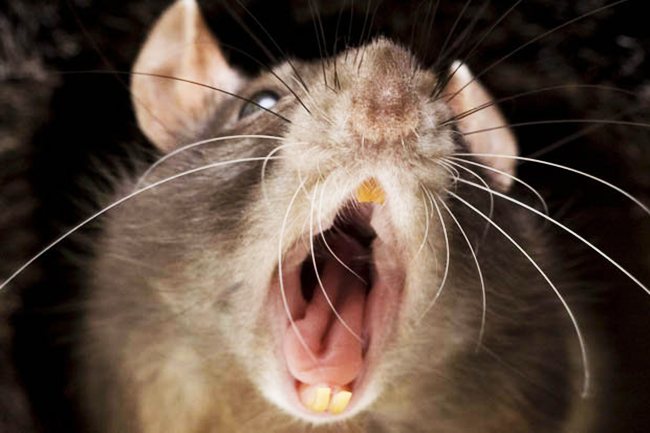How To Protect Your Home From A Rat Infestation

Estimates of the rat population in Britain range from anything between 10.5 to 80 million. Yet experts appear united on one thing: our changing climate will be good news for rats, bringing them closer to humans and in larger numbers than ever before! So how much do we know about them and what can we do to prevent them becoming unwelcome house guests?
There are two species of rats in the UK - the black Rattus rattus and the more common and slightly larger brown Rattus norvegicus. Rats tend to live in colonies so a sign of the presence of one rat suggests that there are probably more of them close by. Indications of the presence of rats include droppings, footprints, teeth marks on food, the sound of scratching in walls or under the floors and a slightly unpleasant ammonia smell.
Rats scent-mark pathways and territories.
If you hear scratching and gnawing the rats are keeping their teeth in good shape! A rat's teeth grow continuously, and are worn down by gnawing on hard surfaces! Rats can also cause serious damage to properties and their contents. They can chew or gnaw through electrical cables, plaster, thick timber and metals such as aluminium and lead. This can result in serious damage to the structure of a building and also give rise to the risk of fire. Rats eat food intended for people and other animals, causing food to become contaminated with urine, droppings and hair, while the loss of grain stored in barns may result in significant financial costs.
Rats are crepuscular, meaning that they are most active at twilight this doesn’t mean that you will not see them during the day!
Rats are capable of reproducing at six weeks old, and can have between 4 and 6 litters per year if conditions are suitable. The litter size can range from 6-14 young.
What attracts Rats to come indoors? Well they are usually searching for a place to nest and a good supply food so the best way to prevent them is remove these luxuries!
5 Top Tips For Staying Rat Free
1. Remove excess rubbish and litter - Refuse which contains food waste or nesting material should also be stored in secure containers.
2. Discard uneaten food from pets or wildlife e.g. birds, rabbits etc. They are attracted by food and so all food, both human and animal, should be kept in airtight containers.
3. Compost heaps should be checked regularly as these can also be an attractive source of food or nesting material for a rat.
4. Rats can pass through a hole only one to two centimetres wide so care should be taken to keep a building in good condition.
5. Drains and sewers should be kept in good order as rats are able to gain access via broken pipe work.
If you think you may have one or two rats living in your building or a larger infestation, call us for free advice or to book a visit by our service personnel.

